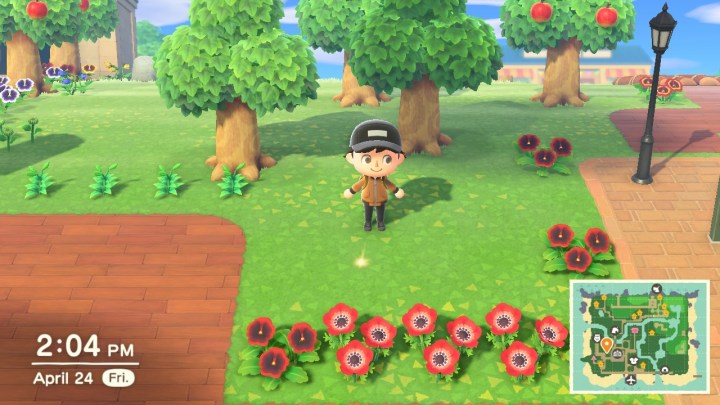A staple of the Animal Crossing franchise for years, the beloved money tree makes a return in New Horizons. If you’ve never played any of the previous titles, you might be surprised to find out that money does, in fact, grow on trees. There’s a bit of nuance to planting your own, but with some luck, you’ll have your own cash crop growing in no time.
Further Reading
- How to pass Label’s clothes challenge
- A guide to eating fruit in Animal Crossing: New Horizons
- Animal Crossing: New Horizons review
Look for the glowing spot

Sadly, you can’t just bury a bag of Bells in the ground and expect it to grow. Instead, scour your island for a spot on the ground that is glowing. It appears on your island every day, although it can be hard to spot. If you’ve looked everywhere and can’t find it, try standing behind buildings and zooming the camera in on your character — too often, the glowing spot will be hidden behind a villager’s home. Once you’ve found it, break out your trusty shovel and dig it up — beneath the dirt, you’ll find a bag filled with 1,000 Bells!
Better than that, this is the spot where you can plant a money tree. Head to your inventory, withdraw the Bells you’d like to use as your “seed” money, then bury the bag in the glowing hole. Wait a few days for the tree to grow, and you’ll have a money tree that holds three Bell bags, each containing the amount of your initial investment. Once the money tree is harvested, it goes back to being a boring, old, regular tree. Feel free to chop it down and make space for the next one.
Play it safe

There’s one catch when planting your money tree — burying more than 10,000 Bells doesn’t guarantee a three-fold return. Although some players have been successful when planting 20,000 Bells — earning a cool 60,000-Bell return — the success rate drops for any investment over 10,000. That means your best bet is to play it safe. Otherwise, you could lose out on a load of cash. We’d recommend simply planting 10,000 Bells, waiting a few days for the money tree to grow, and harvesting your 30,000-Bell return.
Move your money tree to a safe location

The glowing money spot appears on your island each day, but it’s not always in an ideal location. Often, it will be positioned too close to other trees or objects to grow properly. The money tree typically needs at least one or two open spaces on all sides in order to flourish. To move your investment, simply take out your shovel and dig it up. Then, head to a new spot, open your inventory, and plant the sapling. There’s no penalty for doing this, so feel free to move it as often as needed until you find the best location.



